There are countless golf courses around the world, but some of them are more famous than others. Sometimes it’s because of their sheer difficulty and sometimes it’s because they boast holes that are iconic in golfing lore.
Most golf courses boast a “signature hole” that they show off in marketing materials and hope players will recall long after they’ve putted on the 18th green, and that strategy has worked, turning some into the world’s most famous golf holes. Here are some of those famous golf holes from around the world that most players are dying to tee off from, regardless of their skill level.
No. 17 at TPC Sawgrass (Ponte Vedra Beach, Florida)
How could we lead off with anything else? The 17th hole at TPC Sawgrass easily ranks among the most recognizable in the entire sport, thanks to its high-risk tee shot. This par 3 is only 133 yards from the farthest tee box to the green, but it’s all water between them. The green is an island that’s only 78 feet from end to end, making club selection, wind direction, bounce and spin into factors that will completely decide your fate. An estimated 100,000 golf balls are retrieved from the water around No. 17 every year.
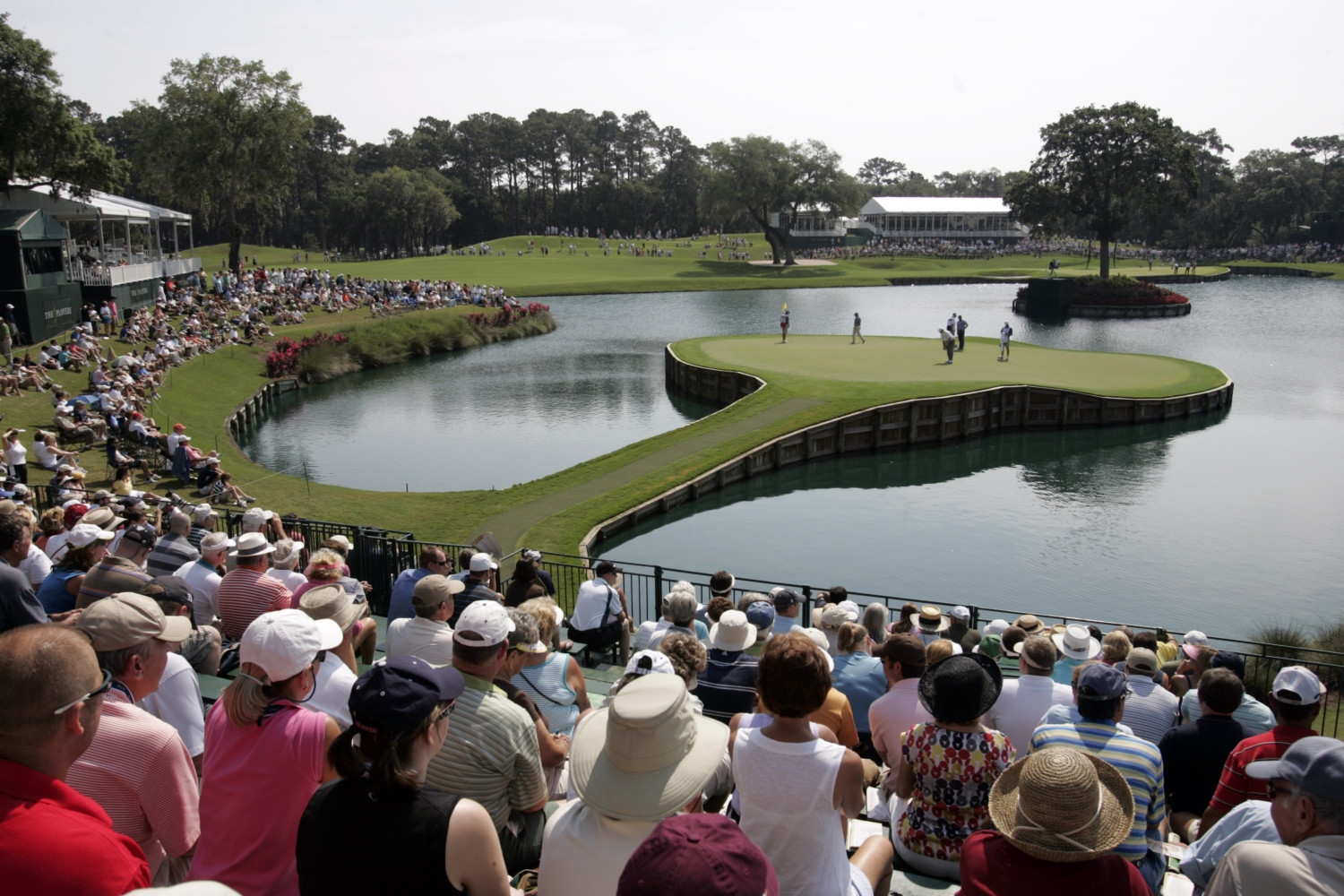
No. 7 at Pebble Beach Golf Links (Monterey, California)
Speaking of extremely short holes, No. 7 at Pebble Beach is maybe the most intimidating wedge shot many golfers will ever hit. This par 3 measures just 106 yards from the tee box and features a 40-foot drop from there to the green, meaning it plays even shorter. Of course, there are vicious winds and Carmel Bay surrounding the green on three sides, with crashing waves making the whole scene even more intense. It’s one of those tee boxes where golfers just have to snap a selfie before taking their shot.
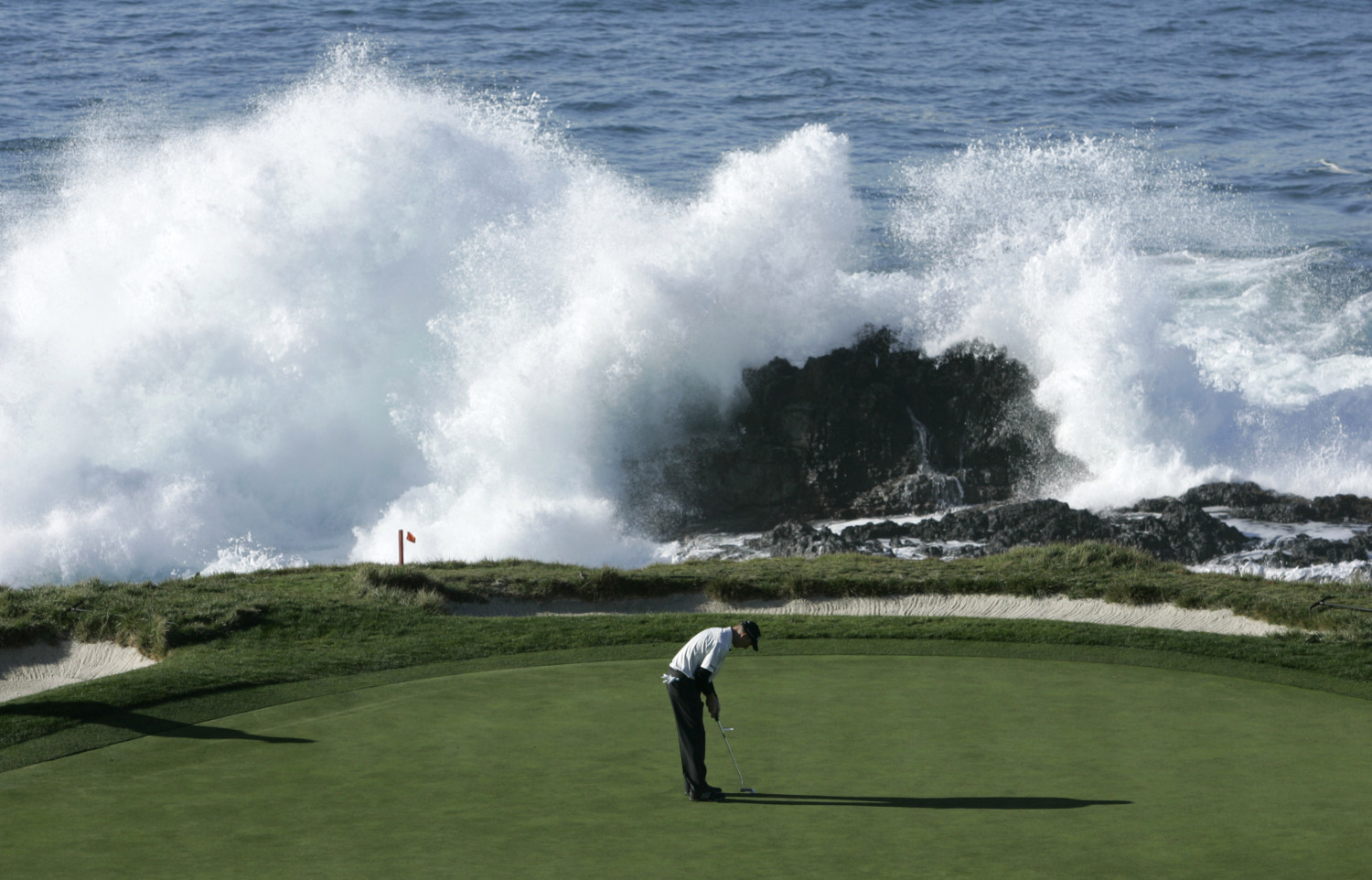
No. 18 at Pebble Beach Golf Links (Monterey, California)
Pebble Beach has been called the best public golf course in the United States by many, with its natural beauty being just one of the many hallmarks. As such, the course is home to several world-famous holes, with this being arguably the most famous finisher in the sport. No. 18 is a fairly straightforward par 5, offering 543 yards of play from the tips, with a tree planted smack in the middle of the fairway being one of its biggest obstacles. But the rocky shoreline that runs along the entire left side of the hole makes for a breathtaking way to end your day.
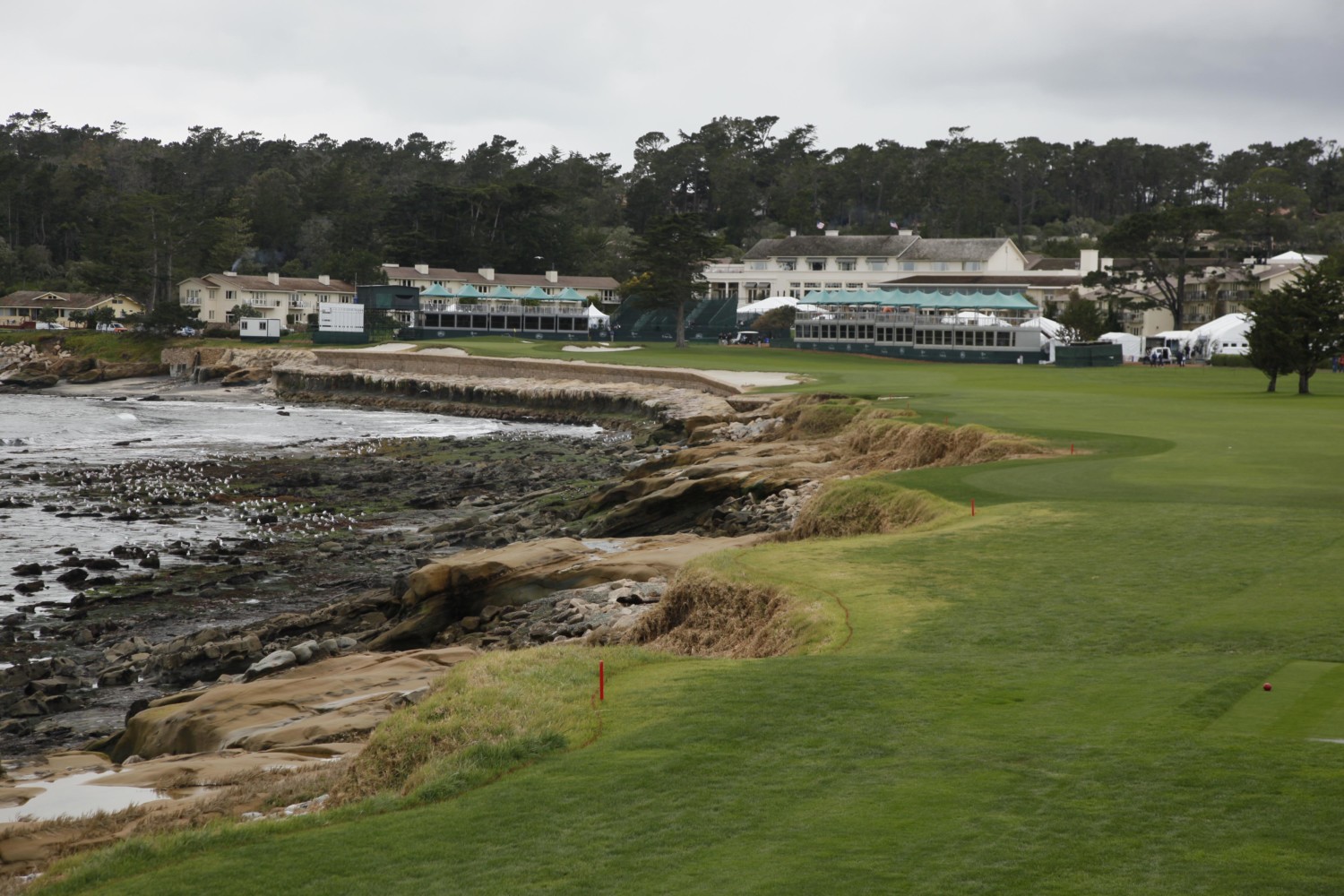
No. 12 at Augusta National Golf Club (Augusta, Georgia)
If one single course can rival Pebble Beach as America’s most famous golf venue, it’s Augusta National. The home of The Masters has several all-time classic holes, and No. 12 is right up there with any of them because of its deceiving difficulty and sheer beauty. The “Golden Bell,” as the hole is nicknamed, is a 155-yard par 3 that is the shortest hole on the course. The creek that crosses just in front of the green will swallow up the ball of anyone who plays it short off the tee, while the azalea bushes, sand traps and forest will do the same to anyone who hits it too long.
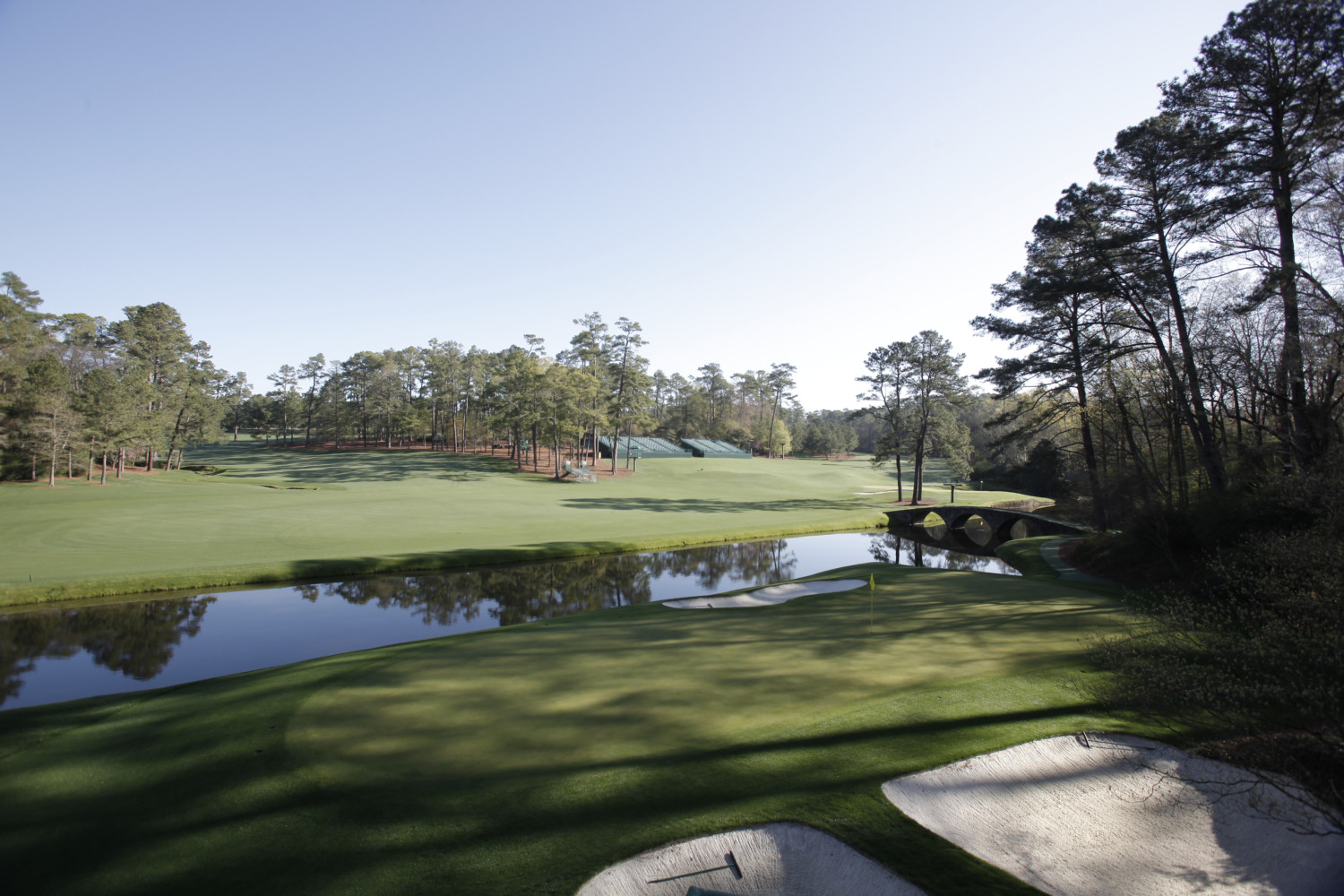
No. 13 at Augusta National Golf Club (Augusta, Georgia)
You’ll find framed shots of the par-5 13th hole at Augusta on the walls of many golf-lovers because it is a true icon of the game. Some have ranked “Azalea” among the most beautiful holes in the world — which is tough to argue with — and many have remarked on its design, which has evolved slightly over time. After teeing off, players take that storied walk across the stony Nelson Bridge before eventually approaching a green nestled in sand traps and azalea bushes that are typically bursting with color during The Masters.
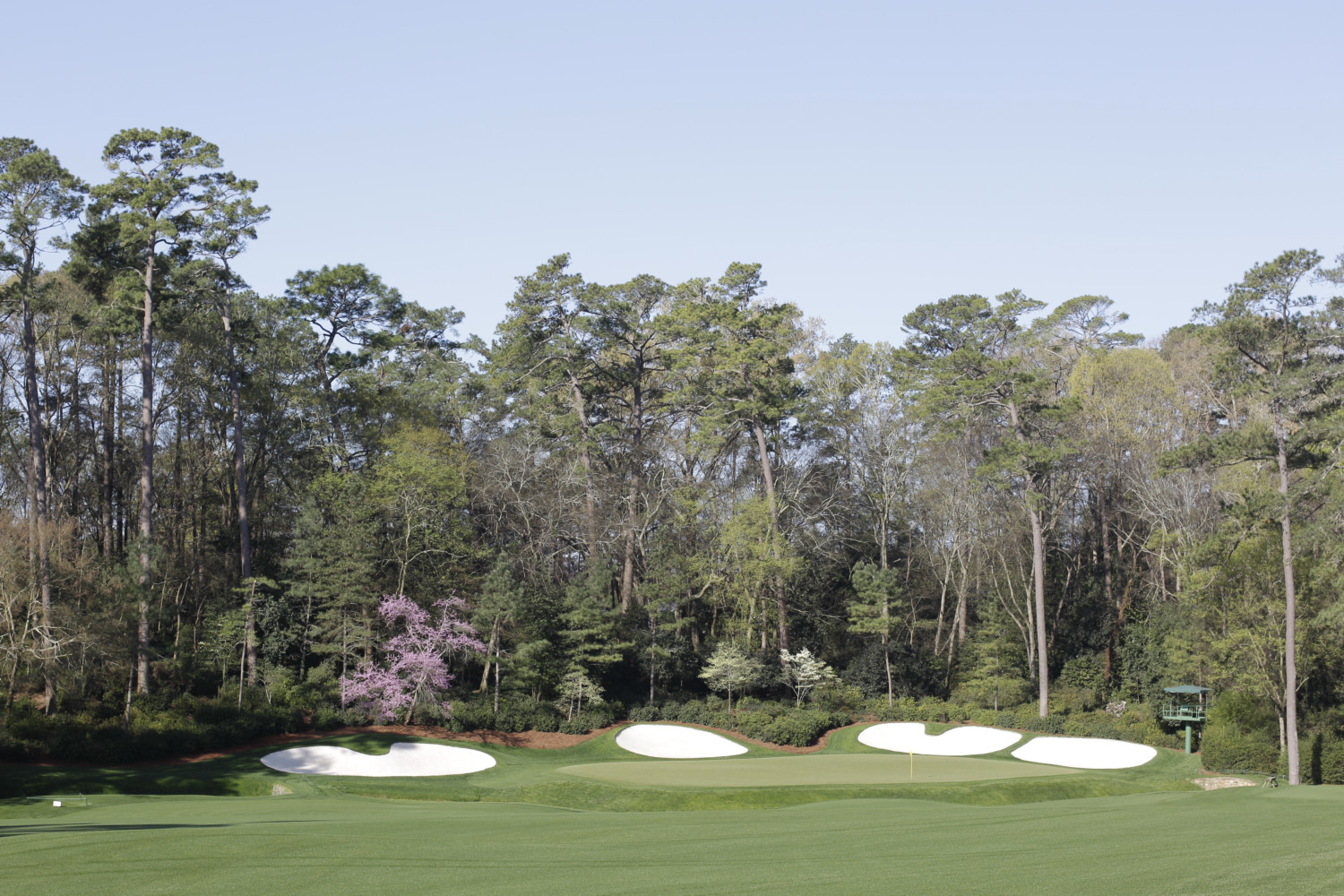
No. 11 at Royal Troon Golf Club’s Old Course (Troon, Scotland)
The Old Course at Royal Troon has earned that name by being open since 1878, which ranks it among the most seasoned courses in golf. Of all the holes at this challenging course, No. 11 is certainly the most infamous. “The Railway” is nicknamed after the train tracks that run right alongside the entire length of the hole, up the right side, while thick bushes of gorse run all along the left. At the 1962 Open Championship, the legendary Jack Nicklaus shot a 10 at this par 4, cementing its legacy as a beast.

No. 15 at Bethpage State Park’s Black Course (Farmingdale, New York)
We named New York’s Bethpage Black the hardest golf course in the entire world, and No. 15 may be the greatest challenge it offers. During the 2019 season, no single hole produced more bogeys on the entire PGA Tour schedule, which is enough to prove its reputation. Despite its difficulty, many have sung the praises of No. 15, as its dramatic uphill fairway and elevated green surrounded by bunker demand surgical striking. The approach shot, which is nearly blind, is what puts this hole among the game’s most memorable.

No. 17 at St. Andrews Links’ Old Course (St. Andrews, Scotland)
Back to the birthplace of golf — and likely Scotland’s most famous course period — for this iconic tester. The “Road Hole” is so named because of a stretch of road that lines the right side of the approach area and green. While the road itself is easy enough for scratch players to avoid, there’s a deep pot bunker on the fairway and essentially a blind tee shot over some railway sheds to start this par 4. But if you play No. 17 well, you’ll have a golf memory on par with your first hole in one.

No. 3 at Oakmont Country Club (Oakmont, Pennsylvania)
Mention the “Church Pews” to most golf fans and they’ll know exactly what you’re talking about. These iconic bunkers at Oakmont Country Club are maybe the most famous sand traps in American golf, and you get your first view of them at No. 3. They are in play on the left side of the hole, while the right side has its own deep bunkers, making this a tee shot that can quickly wreck your outing. It’s tough to imagine any guest player at Oakmont cruising past the Church Pews without snapping a photo or two.
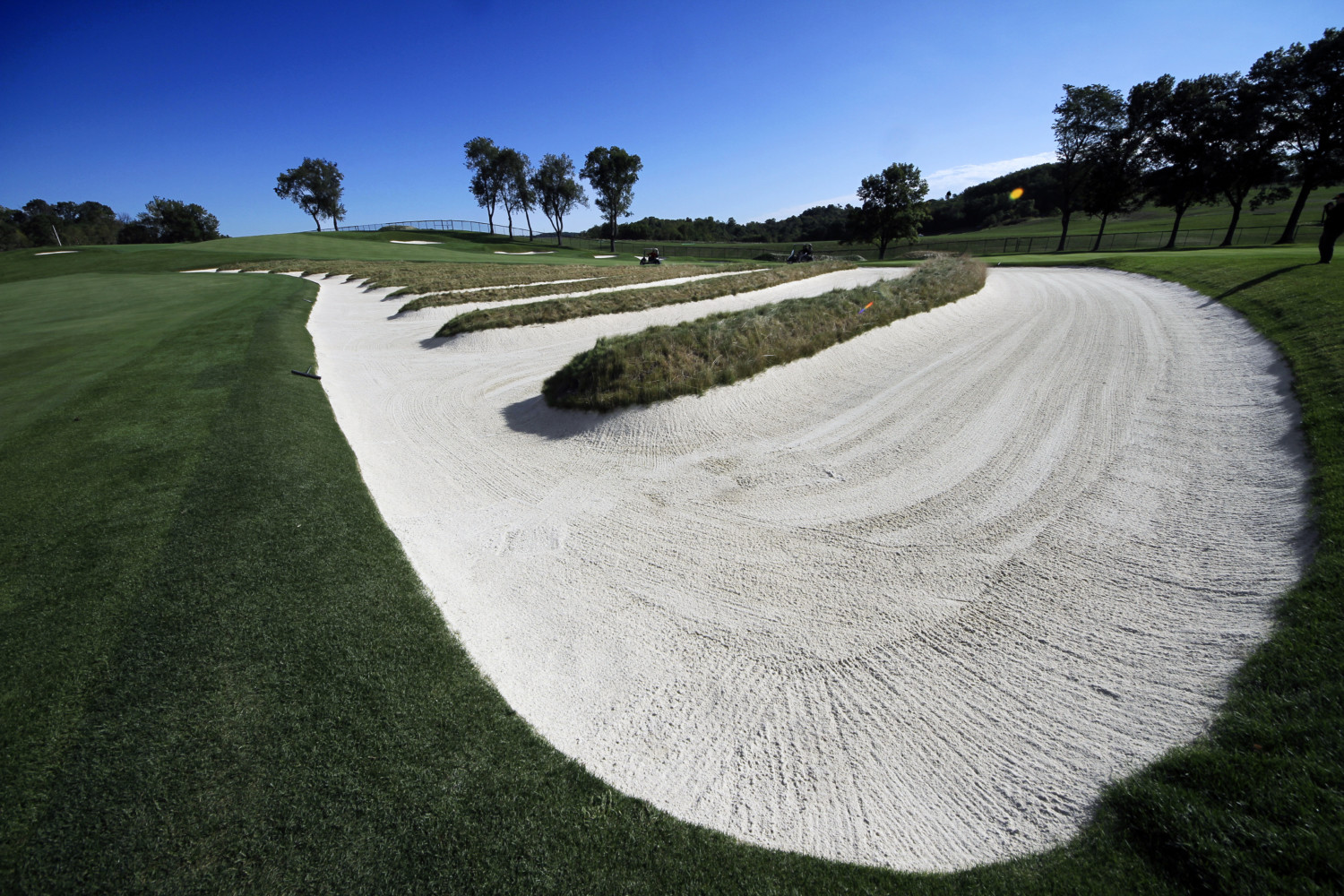
No. 17 at PGA National Resort’s Champion Course (Palm Beach Gardens, Florida)
The “Bear Trap” is a series of three consecutive holes at PGA National’s fearsome Champion Course that are known to stress out even the best players. The run ends with No. 17, which makes it a bit of a relief when you step onto the tee box. This par 3 measures 192 yards from the farthest tee box but features a lengthy carry over the water and a green that slopes back toward the water once your ball has landed there. The iconic “PGA” sign that’s built into the hillside is another thing that makes this hole a memorable favorite.
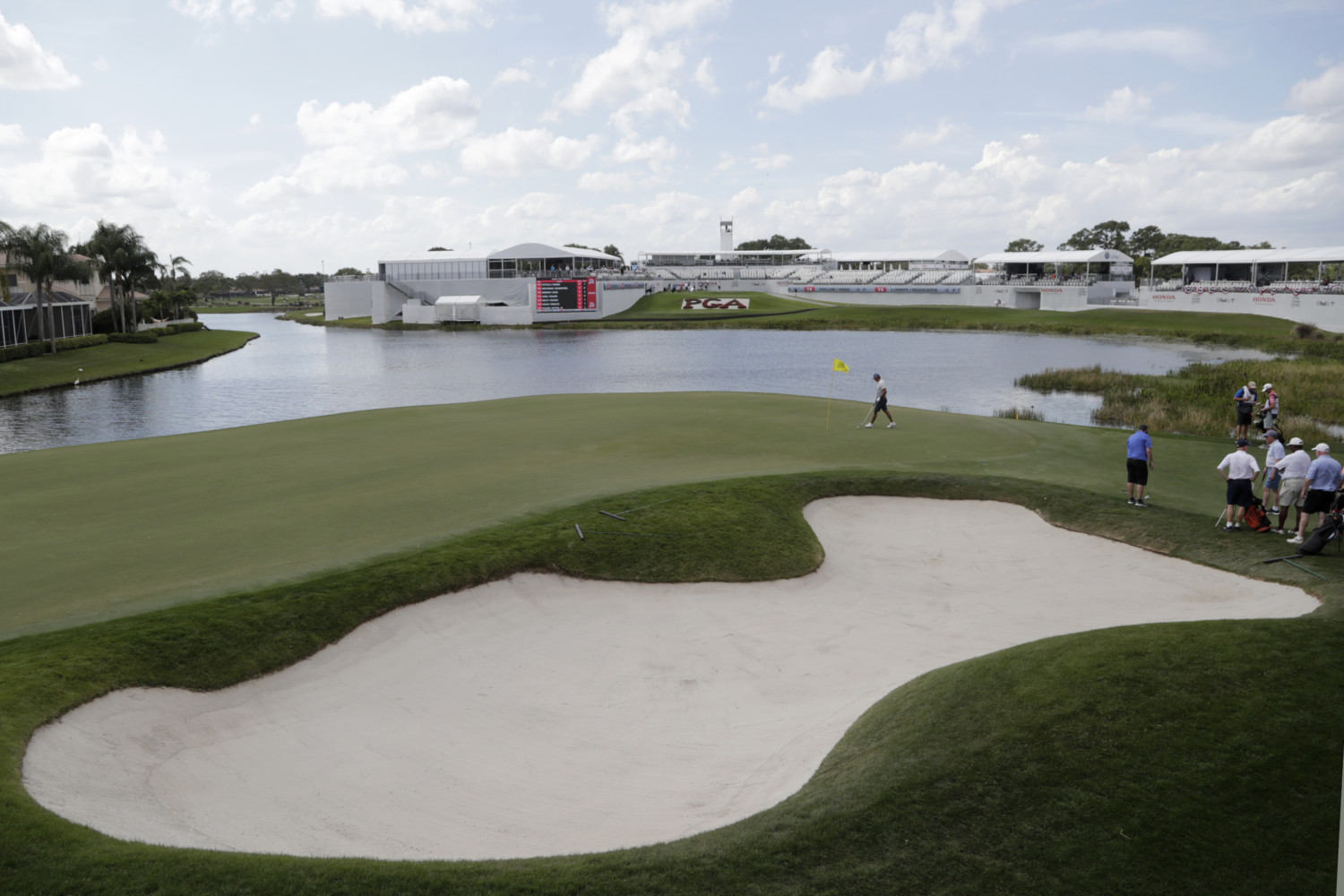
No. 6 at Bay Hill Club (Orlando, Florida)
Arnold Palmer’s Bay Hill is one of Central Florida’s regular stops on the PGA Tour, and No. 6 presents a devilish temptation. The hole is a 555-yard par 5 that features a massive lake between the tee box and waiting green. To drive it straight over the water from the tips would take 350 yards of carry, which big hitter Bryson DeChambeau recently tried — and failed — to conquer. Even if you take the safer dogleg left route around the water, you may come face to face with some gators that have been known to crawl up onto the shoreline.

No. 1 at Ardglass Golf Club (Ardglass, Northern Ireland)
It’s rare of No. 1 to be a signature, but Links Magazine ranked it as one of the 10 scariest opening tee shots in all of golf, and it surely looks like one you’d never forget playing. A beautiful, craggy shoreline and the vast Irish Sea run the entire left side of this par 4, making it bit like the European version of No. 18 at Pebble Beach. Ardglass also boasts that it has the world’s oldest clubhouse, a mighty stone structure that dates back to 1405!
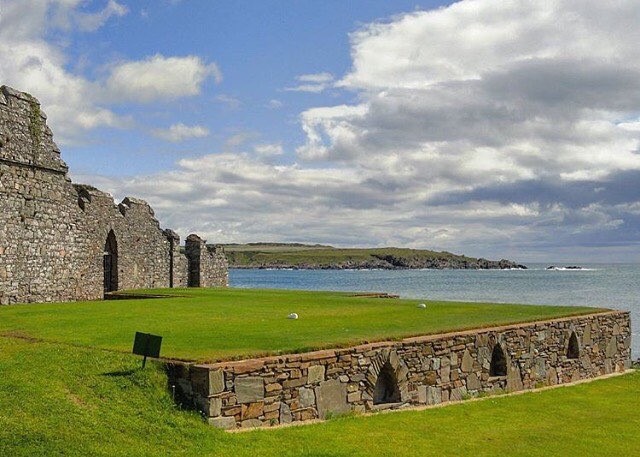
No. 3 at Mauna Kea Golf Course (Waimea, Hawaii)
Hawaii is renowned for having some brilliant golf courses, and all the natural beauty the state has to offer can be seen from the third tee box at Mauna Kea. The course bills the par-3 No. 3 as its signature hole and it’s not difficult to understand why if you check it out. The tee box is nestled in palm trees and your shot needs to carry a chunk of the Pacific Ocean and avoid the stunning cliffs that guard the green. While the scenery is heavenly, this hole can quickly turn into a hellscape if the winds pick up — which they apparently tend to do.

No. 16 at Pasatiempo Golf Club (Santa Cruz, California)
Par-4 holes aren’t typically as interesting as the longer or shorter holes around them, but this 367-yarder at Pasatiempo is an exception. No. 16 has been confounding golfers for nearly 100 years, offering one of the toughest green approaches that doesn’t involve water. The green is at an elevated position and is guarded by steep-edged bunkers across nearly its entire front edge. If you do manage to fly it onto the green, you’ll be met with a putting surface that features massive slopes. It’s a short-game tester in every way.
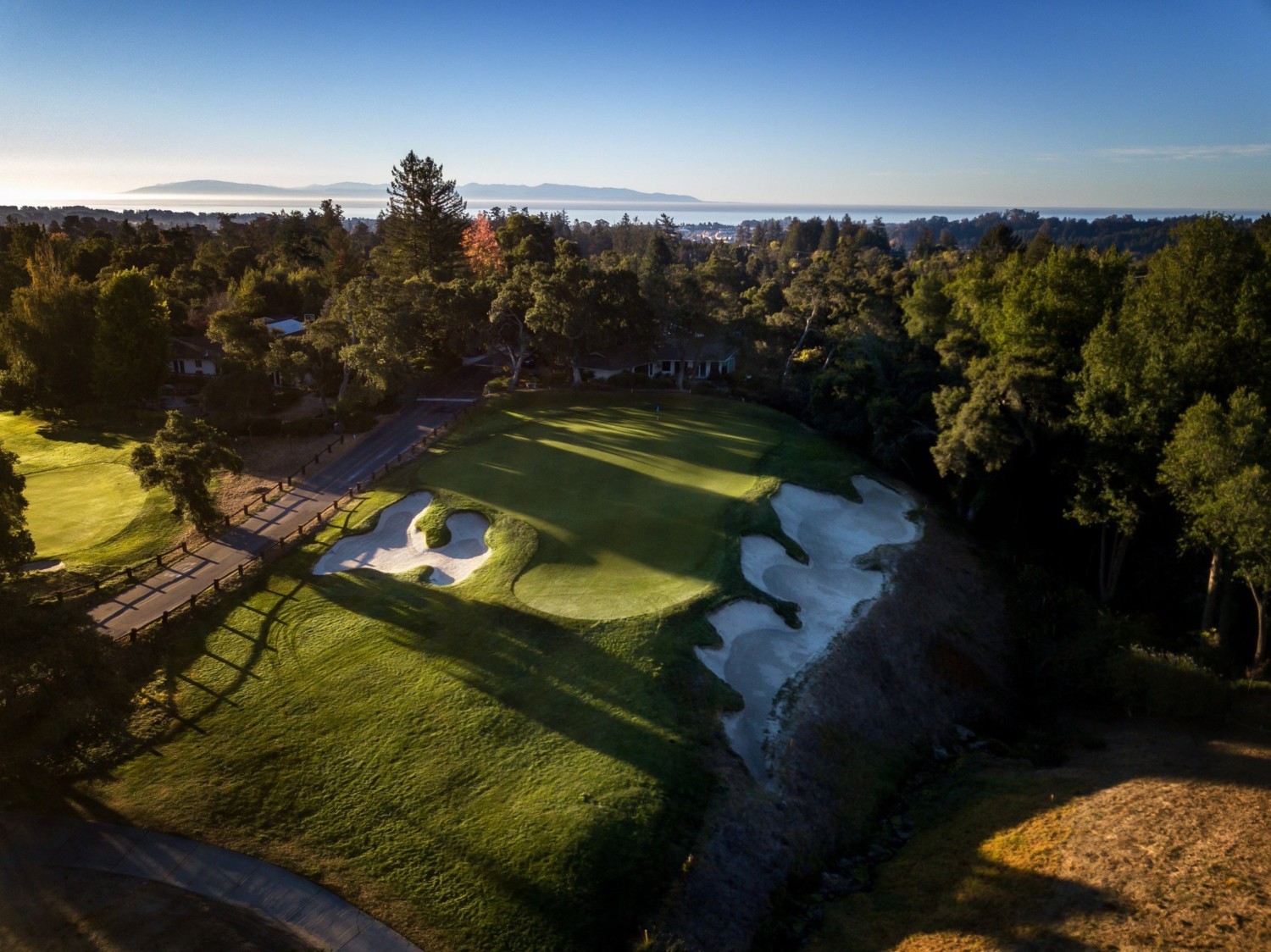
No. 17 at The Reserve at Moonlight Basin (Big Sky, Montana)
The Reserve at Moonlight Basin is a Jack Nicklaus-designed course nestled in the Montana wilderness that got a big boost in notoriety this year. The charity match-play event “The Match,” featuring Phil Mickelson, Bryson DeChambeau, Tom Brady and Aaron Rodgers, was played there, and the world got to see just how stunning this venue is. Hole No. 17 is the one that no player ever forgets, as it’s a par 5 that measures 777 yards. Thankfully, it’s on a steep downhill descent, allowing golfers of all skill level to smash maybe the longest drive of their life.
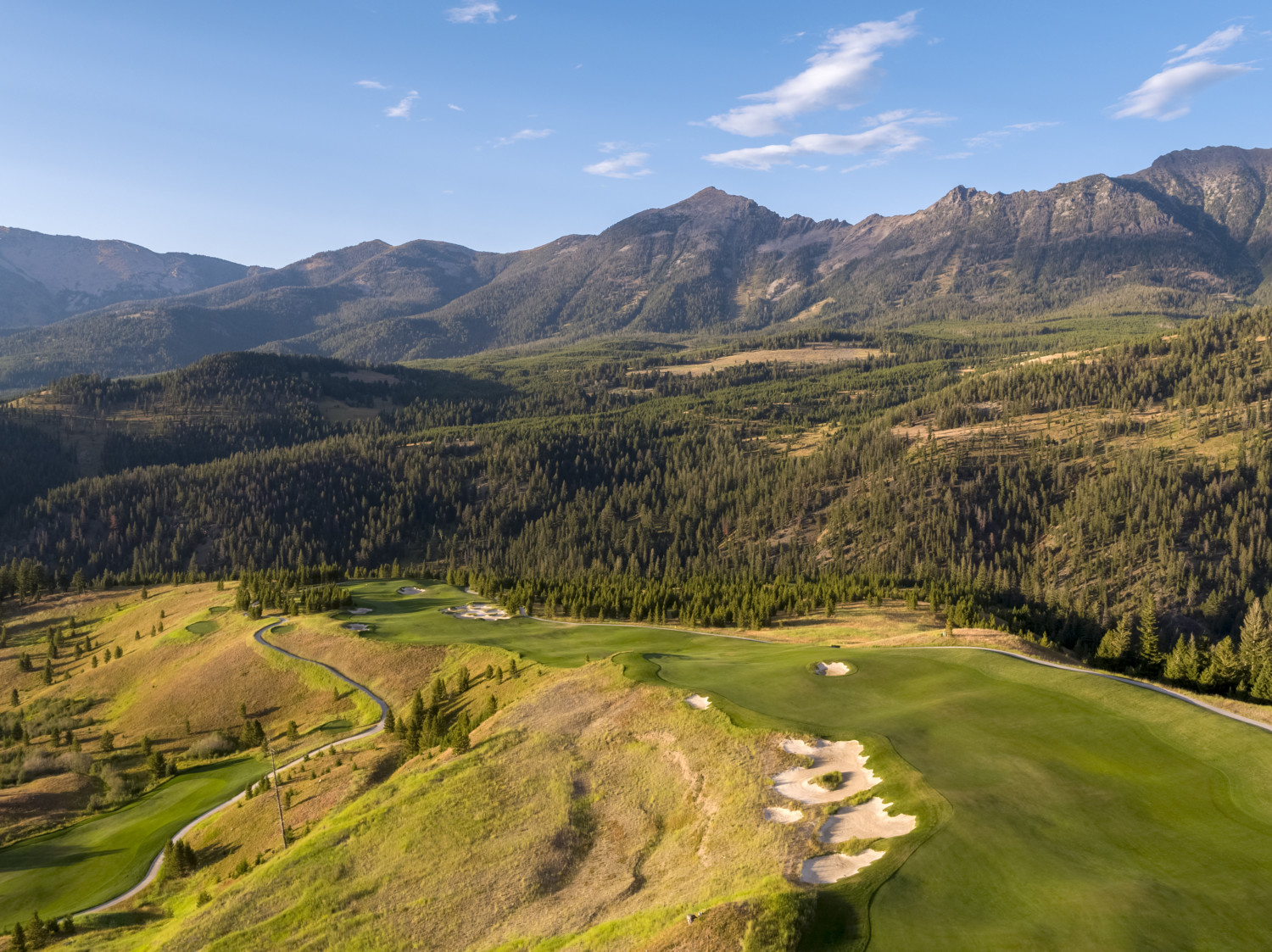
No. 18 at Whistling Straits Golf Course’s Straits Course (Sheboygan, Wisconsin)
Everyone likes to end their round of golf with a solid score at the 18th, but you can forget about that at Whistling Straits. This par 4 plays at 520 yards from the black tees and sees you facing off with virtually end-to-end sand traps until you eventually are forced to carry the ball over a creek and onto a green that has more slopes than a ski resort. All of Whistling Strats is a demanding test but it comes to a crescendo at the finish.
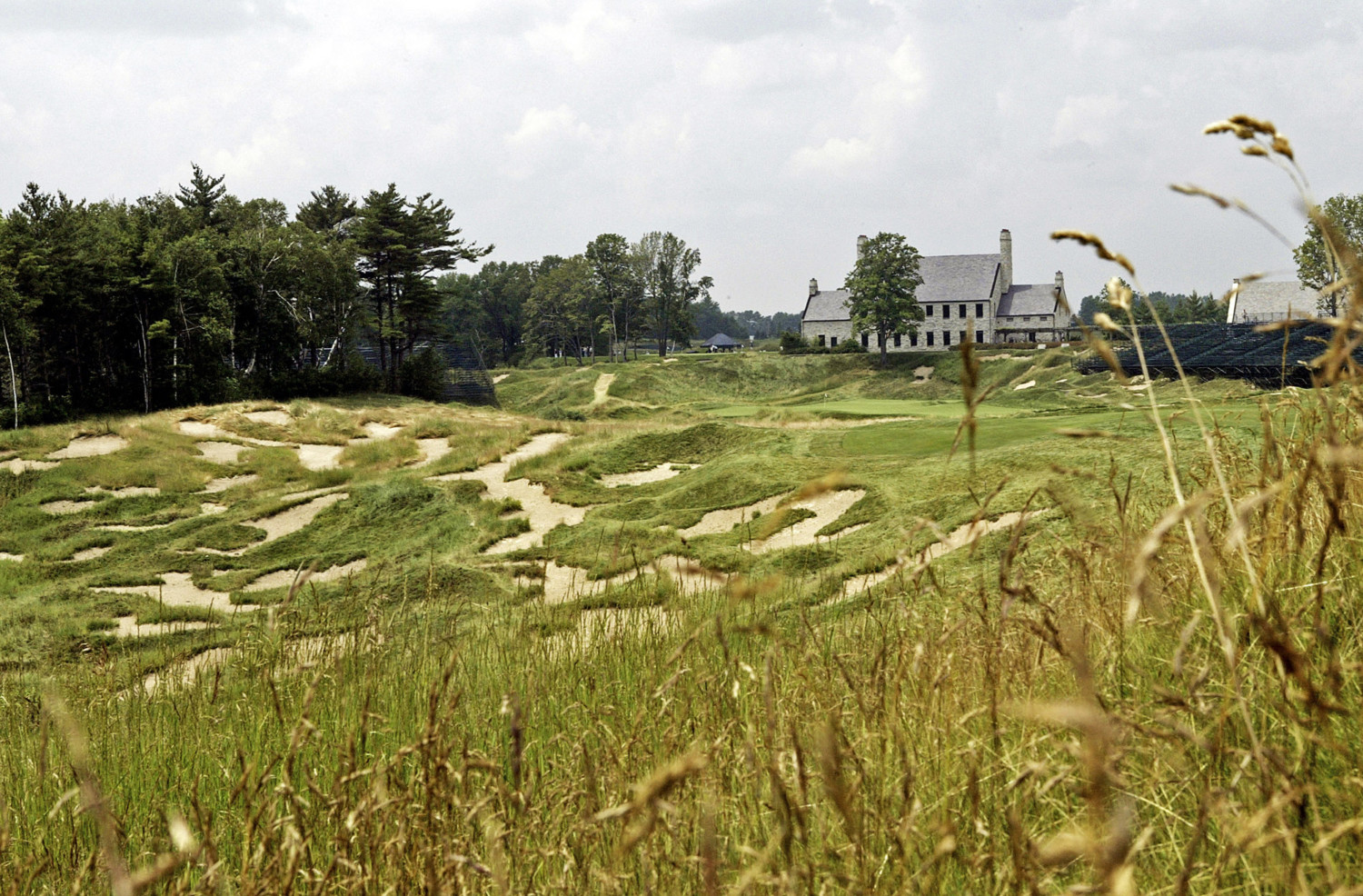
No. 18 at Carnoustie Golf Links’ Championship Course (Carnoustie, Scotland)
The final hole at “Carnasty” lives up to the course’s reputation for difficult golf. No. 18 at this historic venue is loaded with ways to ruin your score, including signature deep bunkers, stone walls and the Barry Burn, a narrow river that happens to cross right in front of the green. The scenery is phenomenal and when you’re done, you’ll be able to say you tackled Carnoustie and it’s punishing par-4 finisher.

No. 18 at The Olympic Club’s Lake Course (San Francisco, California)
Another finisher that will leave you wanting to turn right around and challenge yourself again is No. 18 at The Olympic Club’s Lake Course. This course has been around for nearly 100 years, and the number of golfers who have seen their score get trashed on the final hole is legion. This par 4 plays at less than 350 yards from the tips, but the ultra-tight fairway and elevated green make for a brutal approach. That green is also the smallest on the course and happens to be surrounded by four bunkers.
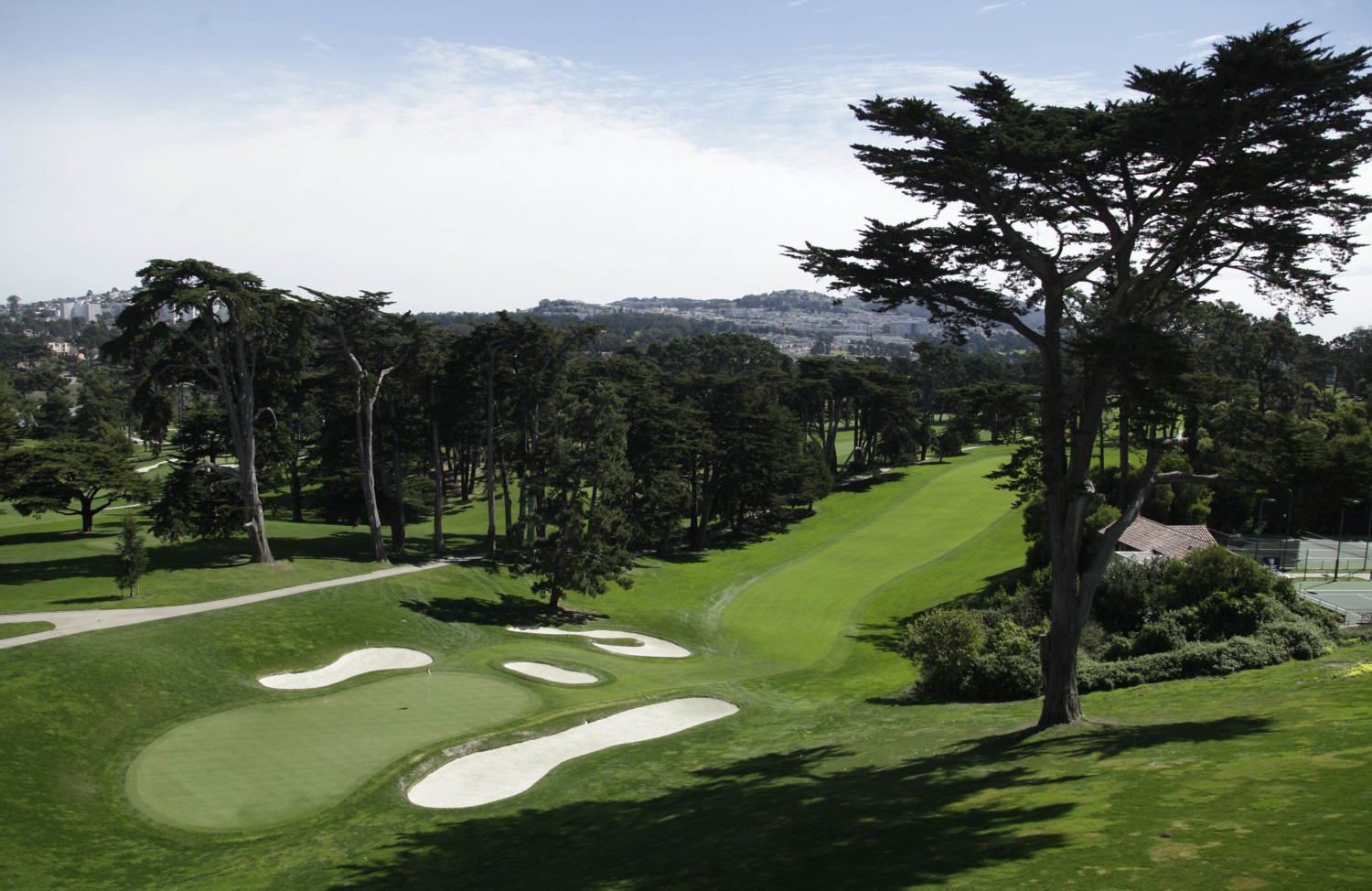
No. 15 at Cape Kidnappers (Hawke’s Bay, New Zealand)
New Zealand’s Cape Kidnappers has an unforgettable name and a reputation that matches it. This is a tough course that shows off the island’s rugged beauty in full, as you launch balls along cliff sides and try to keep them out of the Pacific Ocean. Hole No. 15 is probably the best of the batch, offering 650 yards of dramatic play. This is literally one of the few holes in the world where you could potentially die if you took a tumble, as the cliffs on No. 15 are steep drop offs perched high above the water. Frankly, this hole needs to be more famous in the world of golf.
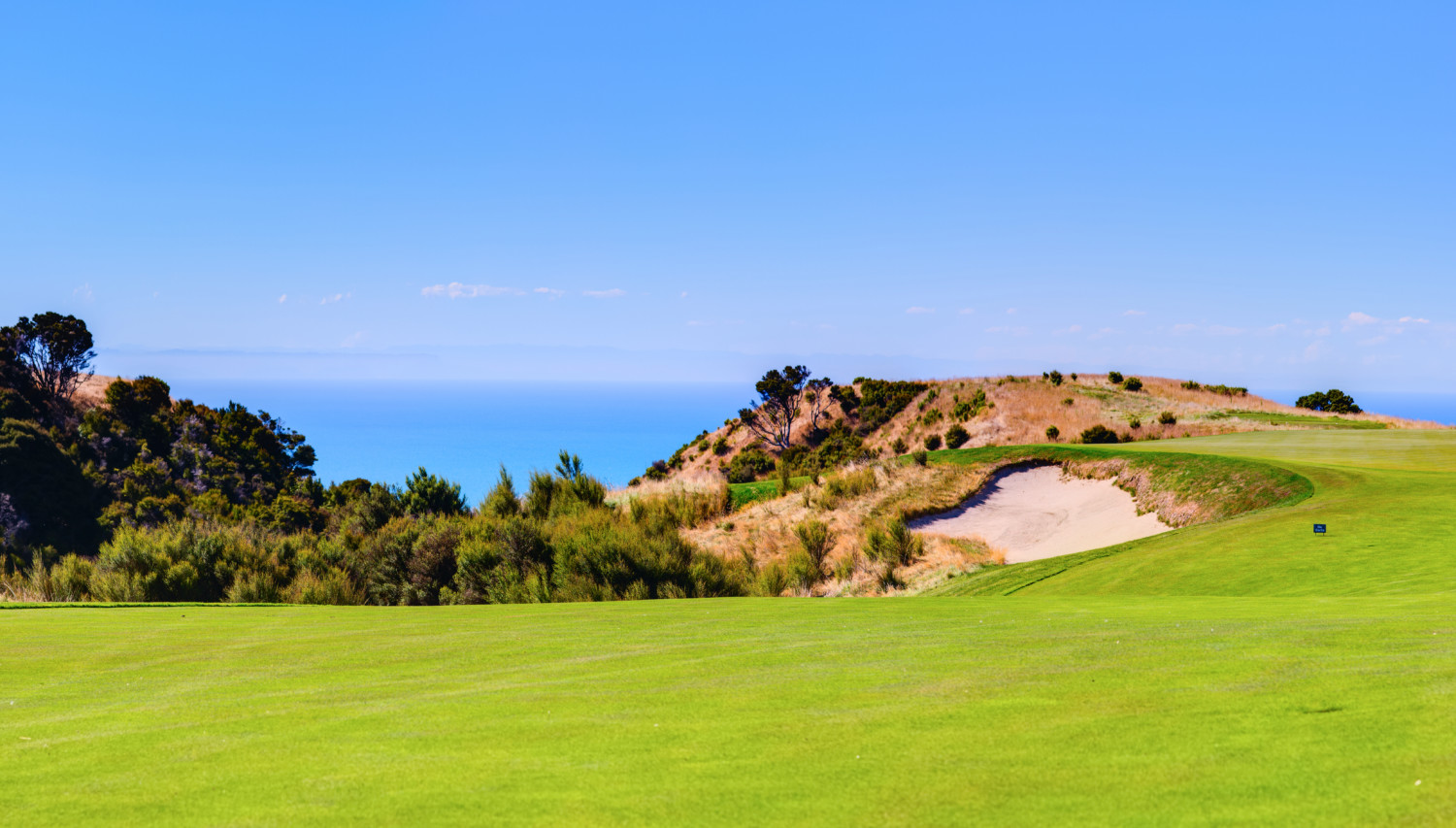
No. 16 at Cypress Point Club (Pebble Beach, California)
Yet another iconic hole that features thrilling cliffs that hang over the Pacific Ocean, Cypress Point’s 16th is a favorite of anyone who has played it. This sub-400 yard par 4 overwhelms you with its natural beauty, as jagged rocks stare at you and waves lap against them, begging you to feed them another ball. There’s more than a 200-yard carry from the tee box to dry land, making this one a nightmare for anyone who get nervous about that first shot.
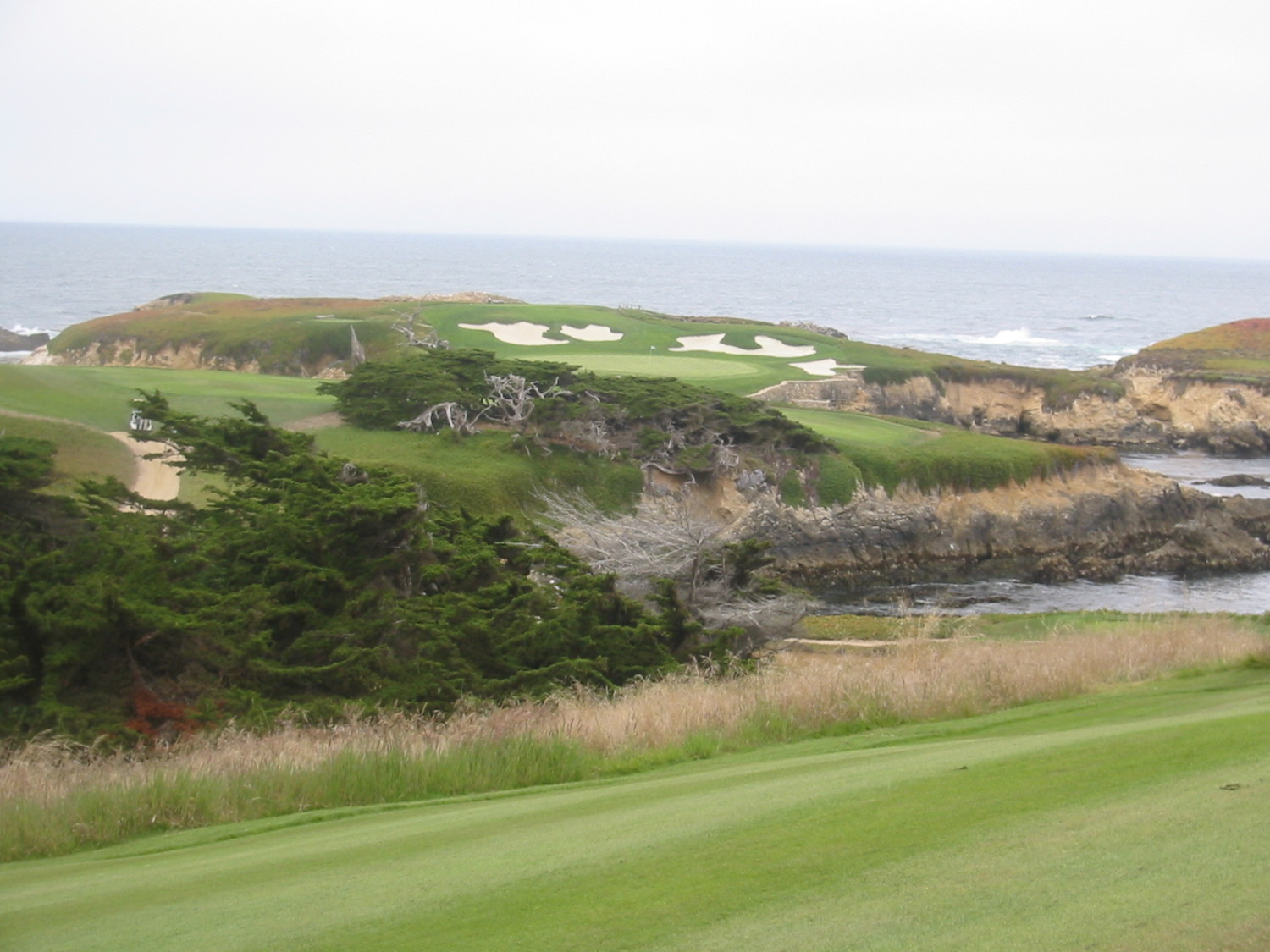
No. 13 at Pacific Dunes Golf Course (Bandon, Oregon)
Golf Digest once described playing the 13th hole at Pacific Dunes as akin to “a religious experience.” Its handicap rating lists the 444-yard par 4 as the second toughest hole on the course, which sounds more like the underworld than paradise. This gem of the Pacific Northwest’s golf scene forces you to carry your tee shot over a rocky cliff-side drop while hitting into the wind and then to approach a green that, by the course staff’s own admission, is difficult to see from the fairway.

No. 18 at Harbour Town Golf Links (Hilton Head Island, South Carolina)
Sometimes all it takes to have a world-famous hole is to have a knockout visual landmark that no golfer can mistake. That’s the case with the finisher at Hilton Head’s beloved Harbour Town course. The hole itself is a bear of a par 4, hugging the salty cove all up the left side while trees line the right. But it’s the red-and-white striped lighthouse that you’ll see as you make the final approach to that tiny green that makes No. 18 an icon of the game.

No. 4 at Royal County Down Golf Club (Newcastle, Northern Ireland)
Let’s zip back to the United Kingdom for another famous golf hole that has tested its share of elite players. No. 4 at Royal County Down is simply links golf at its best, as it offers unforgiving roughs, bunkers aplenty and howling winds on a truly tough tee shot. This 229-yard par 3 requires total precision on the part of the player and doesn’t relent when you’ve reached its hilly green. It’s been said to be the favorite hole on the course of Northern Ireland’s own Rory McIlroy, which is high praise indeed.

No. 16 at National Golf Links of America (Southampton, New York)
While the view from the tee box at No. 17 on this Long Island course is said to be among the best you’ll find in golf, No. 16 in general gets our pick for this particular list. You get a tremendous view of the iconic windmill as you play the hole, which alone makes it a joy for golfers of any level. The par 4 itself has been called an “incomparable” hole and features a punchbowl design around the green that makes it unique and also forgiving to errant shots.
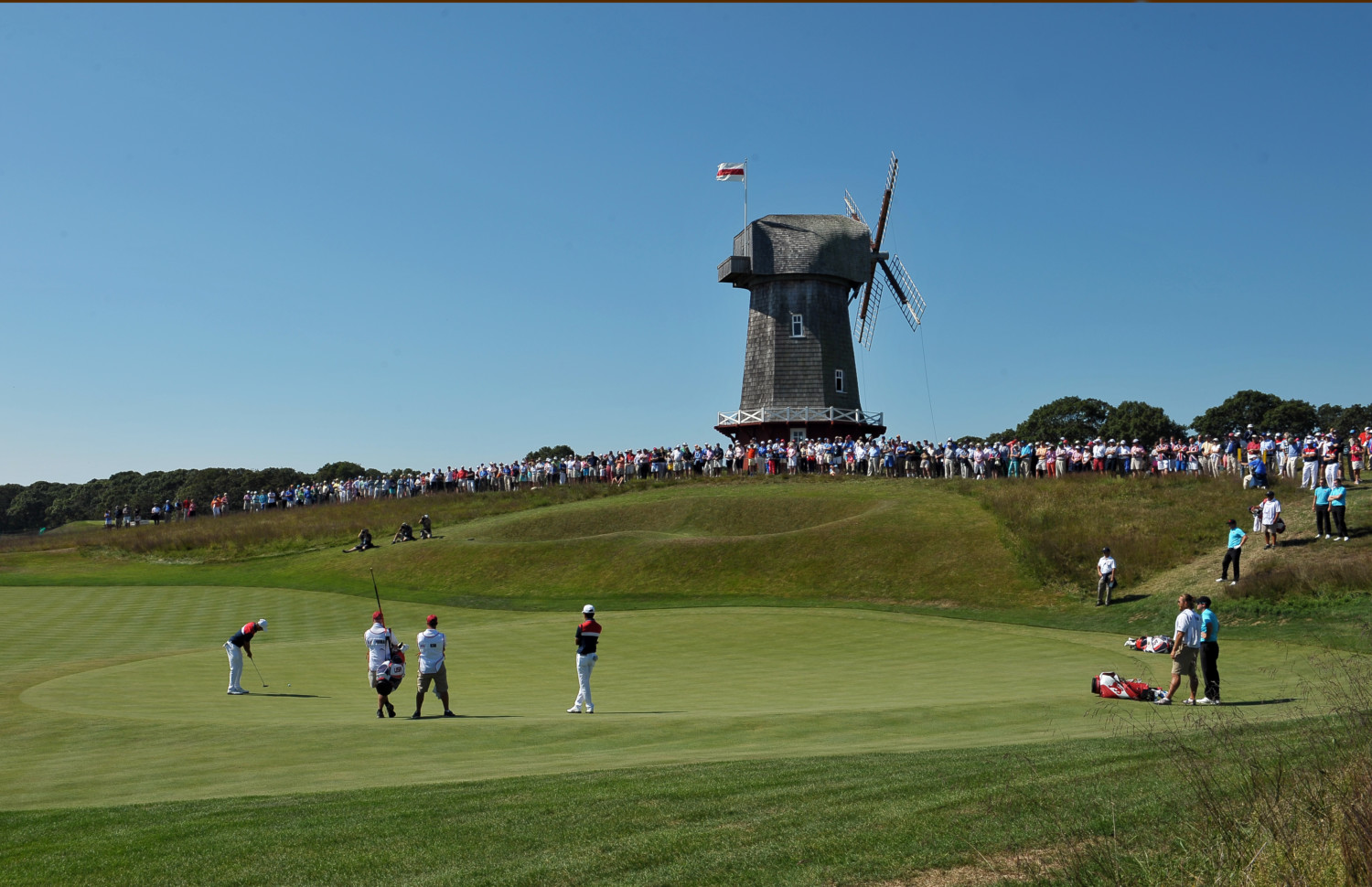
No. 13 at North Berwick Golf Club’s West Links (North Berwick, Scotland)
One of the world’s oldest golf courses features another one of the sport’s most famous holes. The West Links at North Berwick have been around since 1832, and No. 13 has always been a tester. This short par 4 is simply nicknamed “The Pit” and is famous for the stone wall that runs vertically across the far end of the fairway and along the right edge of the green, forcing players to hit their approach shots over it to reach the putting surface. North Berwick’s website perhaps puts it best, as it states, “Don’t argue with the wall — it’s older than you.”
No. 16 at Firestone Country Club’s South Course (Akron, Ohio)
Sure, the beauty of the area around the green at Firestone South’s 16th hole is serene design at its finest, but the trip to get there is a slog. “The Monster,” as this par 5 is known, plays at 667 yards from the tips, making it one of the longest holes routinely played on the PGA Tour. The pond in front of the green has been known to swallow shots, and the hole itself forced Arnold Palmer to shoot a triple bogey during the 1960 PGA Championship.
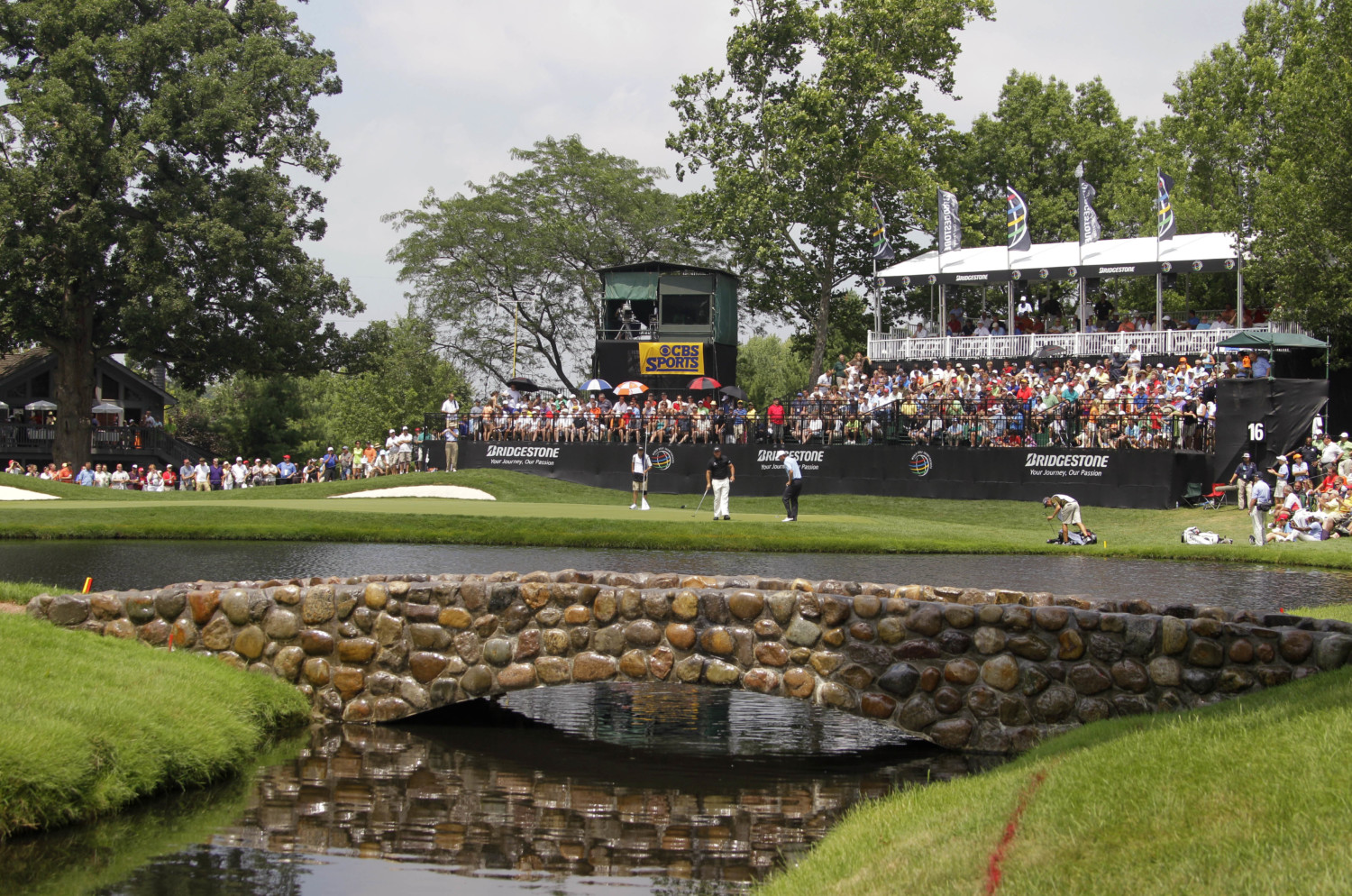
No. 16 at TPC Scottsdale’s Stadium Course (Scottsdale, Arizona)
Pro golfers are very used to taking pressure-filled tee shots, but there can’t be any more nerve-shattering than No. 16 at TPC Scottsdale. It’s a pretty straightforward par 3, with sand being the only hazard to speak of, but the atmosphere and look of it is so intimidating for anyone with a hint of stage fright. During big tournaments at the course, the stadium-style seats that surround the hole are packed with rowdy fans, making it quite unlike any other hole in the sport.

No. 18 at Pinehurst Resort Course No. 2 (Pinehurst, North Carolina)
The lengthy par-4 finisher at Pinehurst’s famed Course No. 2 begins with a mammoth bunker you’re forced to carry off the tee. From there, it’s virtually all uphill and into the wind on most days, making it a tough ask for shorter hitters. The fairway at this famous hole is mighty slim in parts, as well, and the bunker on the front right side of the green is particularly tough to get out of, according to the course. It’s really a treat all around.

No. 1 at Royal Lytham & St Annes Golf Club (Lytham St Annes, England)
Your day at England’s beautiful Royal Lytham & St Annes gets off to a memorable start with this challenging par 3. It’s 206 yards from the far tees and proper club selection is vital. An unbelievable nine pot bunkers await your ball on this short hole and can make your score card ugly as soon as you’ve started. It’s no wonder Links Magazine listed this as one of the 10 scariest opening tee shots in golf.

No. 12 at Meadows Farms Golf Course (Locust Grove, Virginia)
Virginia’s Meadows Farms might not jump off the page as a golf course you’ve heard of, but its 12th hole deserves to be pretty famous. That’s because it’s been recognized officially as the longest hole of golf in the United States, making it a must-play attraction all its own. This unique par 6 — yes, you read that number correctly — has a whopping 841 yards of ground to cover from the farthest tees. You’ll have one heck of a war story to tell after finishing this marathon and your fairway woods will get some major practice.

This story originally appeared on Simplemost. Checkout Simplemost for additional stories.


